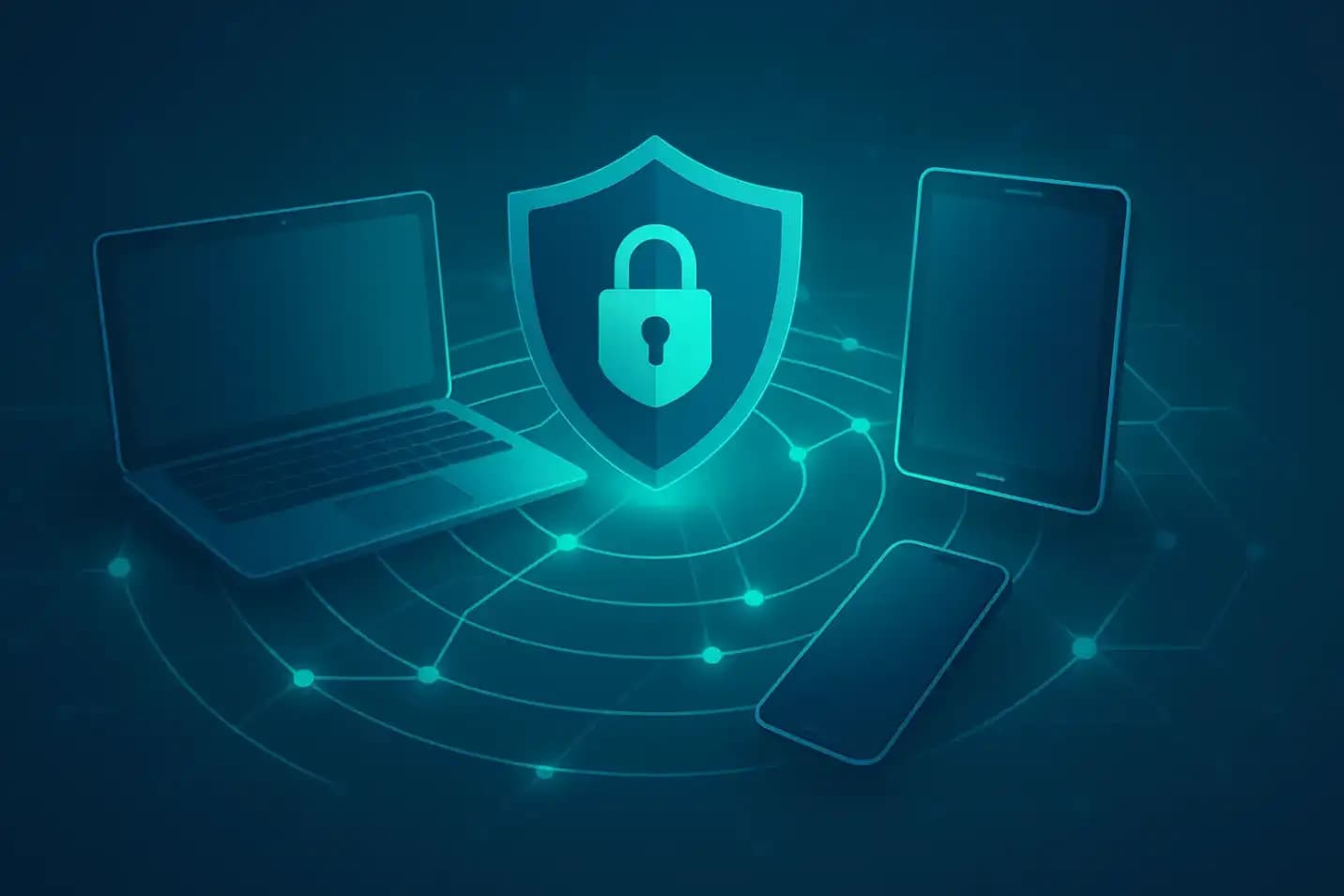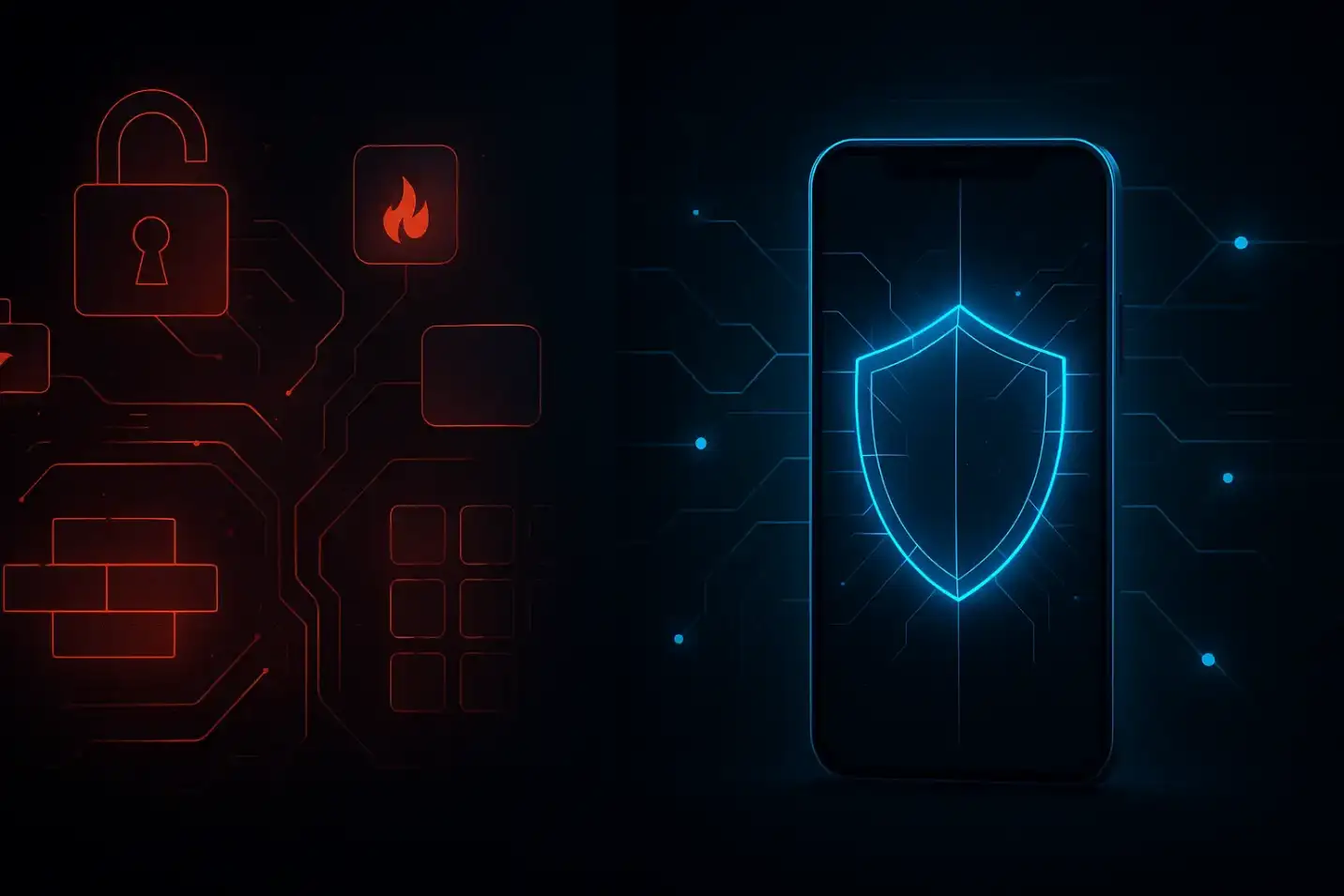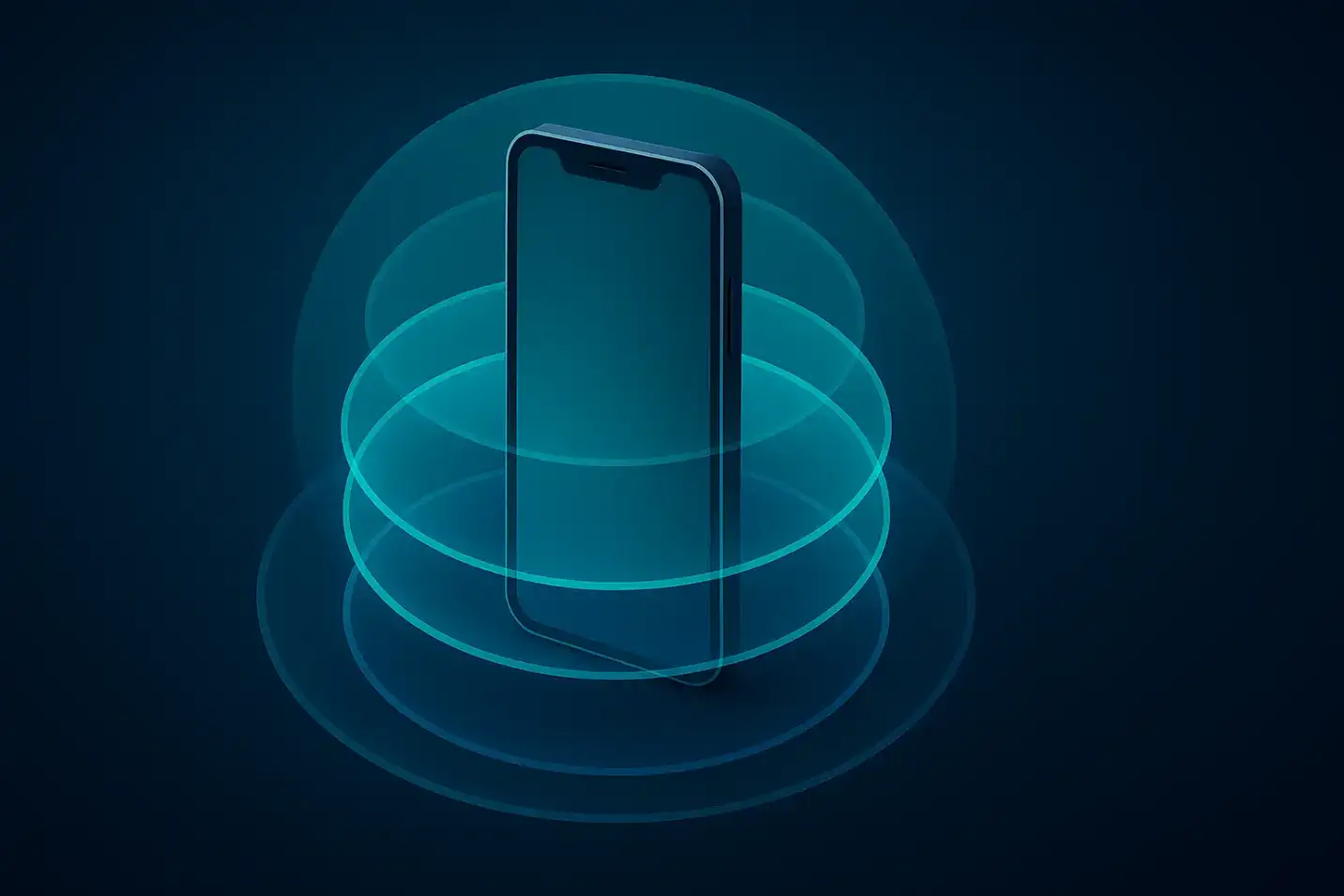Integrated Mobile Security Solutions

Hoplon InfoSec
21 Oct, 2025
What is an integrated mobile security solution?
Mobile devices are the most significant tools for running a business in today's environment, when everything is linked. Employees may access key databases, business messages, and apps from any of their devices, such as phones, tablets, and desktops. But this level of freedom of mobility has also made things far less safe. More and more companies are letting their employees bring their own gadgets to work and work from home. This makes it hard to keep track of these devices and take care of them.
An integrated mobile security solution is a full plan for keeping your phone safe. When you use a mobile device, it keeps everything safe, including the device itself, the apps, the data, the network, and your identity. Antivirus and device management are two examples of outdated mobile security products that only protect one layer at a time. An integrated solution, on the other hand, combines numerous levels of safety into one system.
Mobile Device Management (MDM), Mobile Threat Defense (MTD), Identity and Access Management (IAM), and Data Loss Prevention (DLP) are all things that you can generally find in one place. The goal is to create a protection model that stays the same from start to finish and makes sure that all mobile endpoints are safe, observed, and following the rules.
This all-in-one architecture makes it easy for businesses to discover and get rid of threats, keep track of compliance, enforce regulations, and let users and devices safely access company resources from anywhere. When security teams utilize these tools together, they can watch and control more. This makes people think of mobile devices as safe things instead of things that could be dangerous.
What are the benefits of integrated mobile security solutions?

More power and attention
One of the best things about combining mobile security is that you can see all of your devices in one location. From one dashboard, IT administrators can see the health, compliance, and activity of all endpoints. This makes things easy to run and makes sure that any possible flaw is detected fast. Centralized control makes it easy to put new rules into force or alter them on thousands of devices, making sure that everyone in the organization is following the same rules.
Better at spotting and dealing with threats
Security tools that work in separate areas don't work together to discover threats. But integrated systems check a variety of different aspects, such as network traffic, app behavior, and user identity, to discover problems that might not be visible otherwise. For instance, if a hacked device tries to get to sensitive data using credentials that seem off, the system might promptly flag or block the request. Linking data in real time makes it much easier to discover and repair errors, which decreases the chance of damage.
Making things function more smoothly and saving money
An integrated solution works better since it replaces a bunch of distinct tools with one platform that does everything. This makes it easier to get licenses, decreases maintenance costs, and means that fewer people need to be trained on how to use diverse applications. When updates, patches, and security enforcement are done automatically, IT workers have an even easier time of it. This frees them up to work on important initiatives instead of having to check things by hand.
Better data protection and following the rules
As standards increase and become stronger, including GDPR, HIPAA, and PCI-DSS, it's more critical than ever to make sure that mobile devices obey them. Integrated solutions always keep an eye on and report on what every device is doing. They also make sure that laws about data protection, access control, and encryption are always followed. They also create reports on compliance, which speed up audits and make them easier to grasp.
A good time for users
People who use cell phones these days want things to be easy. Integrated security strikes a balance between safety and convenience of use. It uses contextual data like device health, user activity, and location to apply adaptive authentication instead of making people log in regularly or limiting access. For instance, if the user is in a safe place and using a secure device, they can log in without any concerns. If not, extra procedures are performed to make sure you are who you say you are.
Why Is Integrated Mobile Security Important?

The Growing Attack Surface of Mobile Devices
Over the past ten years, the mobile landscape has changed a lot. Employees today use their phones and tablets for more than just talking to each other. They also use them to access private information, work together on shared platforms, and handle transactions. Every connection, especially those made over public Wi-Fi networks, might make things less secure. Attackers use phishing, malware apps, or network-based breaches to take advantage of these weak spots.
Because they weren't made for the mobility and variety of mobile ecosystems, traditional endpoint protection solutions typically don't work against these new threats. Integrated solutions close this gap by combining network defensive tools, behavioral analytics, and continuous monitoring that are all built for mobile situations.
The rise of BYOD and working from home
With BYOD policies becoming more common, companies have less control over the devices that can access their resources. These devices might not have important security fixes or might have apps that haven't been checked out. An integrated solution can keep business data safe by putting it in secure containers and enforcing security rules without getting in the way of the user's personal data.
This necessity has become much more important because of remote work. Workers can now connect to company systems from their homes, coffee shops, and airports. Integrated mobile security makes sure that connections are safe by checking the user's identity and the device's trust level before letting them in.
No Trust and No Security at the Edge
In the past, companies used firewalls and VPNs to secure their internal systems from the outside. But in the cloud age, there is no set boundary. Mobile devices are always connecting to cloud services and third-party apps that aren't protected by traditional security measures.
The Zero Trust model says that every connection should be checked based on identity, device health, and context. Integrated mobile security fits with this concept. By default, no one or device is trusted. This method greatly lowers the chance of data breaches and attackers moving throughout the network.
Legal and compliance needs
More and more, rules compel companies to show how they protect data on mobile devices. If devices aren't protected, they can cause data breaches that can cost a lot of money and hurt your reputation. Integrated solutions make it easier to follow the rules by giving you automated logs, encryption, and audit trails that satisfy industry requirements.
In short, integrated mobile security isn't simply a nice-to-have; it's a must-have in a world where mobile devices are the main means to access important company assets.
Key Features of Integrated Mobile Security Solutions

Taking care of all endpoints
A Unified Endpoint Management (UEM) platform is the most important part of any mobile security system that works with other systems. UEM lets companies keep track of all of their mobile devices in one place, register them, and set them up. It makes sure that regulations for security, such as encryption, strong passwords, and OS updates, are followed. This centralization makes sure that all devices, whether they belong to the user or the enterprise, fulfill the organization's security standards.
How to Keep Yourself Safe from Mobile Threats
MTD is a mobile threat prevention that provides another layer of active detection. It checks devices for malware, finds phishing attempts, and stops man-in-the-middle attacks on Wi-Fi networks that aren't safe. Machine learning helps MTD learn about new threats all the time. This helps stop zero-day vulnerabilities from happening in the first place.
Putting applications in containers and keeping them safe
It's really important to keep your professional data and personal data separate, especially on devices you bring to work. This is what integrated solutions do: they place apps in containers. A "work" container keeps business applications and data safe by keeping them apart from anything else. This container has security features including encryption, the ability to delete data from a distance, and limits on how much data may be shared. This stops business data from getting out while still allowing consumers to use their own devices.
Management of Identity and Access
Another important part of mobile security is authentication. Identity and Access Management (IAM) is used by integrated systems to check users in more than one way, as with passwords, fingerprints, and contextual risk scoring. Businesses can create conditional access controls by connecting IAM to device compliance. For example, only devices that meet particular security requirements can get to sensitive resources.
Preventing Data Loss
Data Loss Prevention (DLP) solutions keep an eye on how company data moves in and out of the device to stop people from sharing it without permission. People might not be able to copy data to apps that aren't approved or upload files to clouds that aren't theirs. This keeps confidential information safe by keeping it within trusted limits.
Security for networks and communication
Integrated systems often come with secure communication options like mobile VPNs and encrypted tunnels. These protect data while it is being sent via networks that are neither private nor secure. Network anomaly monitoring also searches for odd connections, which helps halt assaults before they get to business computers.
How Integrated Mobile Security Solutions Work
Getting devices registered and making sure the laws are obeyed
The procedure starts when a user adds a device to the organization's mobile security system. You can utilize links or QR codes to make this sign-up process happen automatically. After you register the device, the system checks to see if it is compliant by looking at the OS version, encryption, and whether it has been rooted or jailbroken. After these inspections, the device is either compliant or not, and the regulations that need to be in place are placed in place.
Automated controls can restrict people from using company resources until they fix their PCs. This makes sure that only safe devices that have been examined can connect to the company's systems.
Always on the alert for hazards in real time
The solution watches what devices do even after they are set up. It searches for odd or hazardous apps, settings, and behavior. Machine learning algorithms look at traffic patterns to discover phishing or command-and-control activity. If the device acts strangely, administrators are told right away, and the gadget can be put in quarantine, or an upgrade can be required right away.
This capacity to observe things in real time is highly critical for getting rid of mobile threats that move swiftly, including spyware and ransomware. If they aren't halted, these attacks can take over huge networks in just a few minutes.
How to Use Apps Safely
App shops that are controlled or whitelisted take care of apps. Digital signatures protect business apps when they are sent out. Because all of these programs are part of the same system, attackers can't update or upgrade them. Runtime protection watches apps to make sure they don't try to add code or get to data without permission. If it discovers any, it switches them off.
These programs protect business data by putting it in containers. You can delete the gadget from a distance if it gets lost or stolen. This protects the data even if the device fails.
Protection at the Network Level
It's equally as crucial to keep the network safe. A safe VPN connection can send all of a company's data and keep it safe by encrypting it from start to finish. The system checks that devices can only connect to safe Wi-Fi networks. The connection is cut off automatically if a risky or unauthorized access point is discovered.
Also, DNS and SSL inspection tools make sure that hackers can't access or change communications. Hackers regularly use phishing attacks and faulty redirects to acquire credentials. This keeps users safe from these attacks.
Who can see if identification is under control?
When you try to get into an email, database, or cloud app, policies check who you are. The system checks more than simply the user's identity. It also checks the device's health, where the request originated from, and how risky it is.
For example, a request from a device that follows the rules on a trusted network might be approved immediately. On the other hand, a request from a rooted phone on an unknown network would need more than one form of verification or be denied outright. The primary principle underlying Zero Trust is that you should be able to adjust how you make choices.
Reporting and solving issues
The device keeps an eye on everything that happens and alerts security specialists when it sees a suspected threat or policy violation. Built-in analytics capabilities give admins exact forensics that show them where the event started and how far it went.
You can destroy a container, take away credentials, or stop a network from anywhere and at any time. You can keep track of events, compliance trends, and how well your devices are performing with a multitude of reporting choices. This is helpful for both government audits and security operations.
Conclusion
Businesses need to use mobile security technologies that work well together to protect themselves next. As the divide between work and personal digital life gets less clear, businesses need a way to keep things running smoothly and keep important data safe.
These solutions also protect your data, provide you control over your mobile devices, help you manage your identity, and keep you secure from attacks. This makes it simple for you to follow the rules, do things correctly, and act quickly.
Hackers can sneak into mobile devices and do their business, but if a company uses integrated mobile security, they are safe. It strengthens core security ideas like "least privilege," "continuous verification," and "zero trust." This means that it's less probable that hackers will get into mobile devices; thus, it's even more important to keep a safe and flexible company network.
Share this :